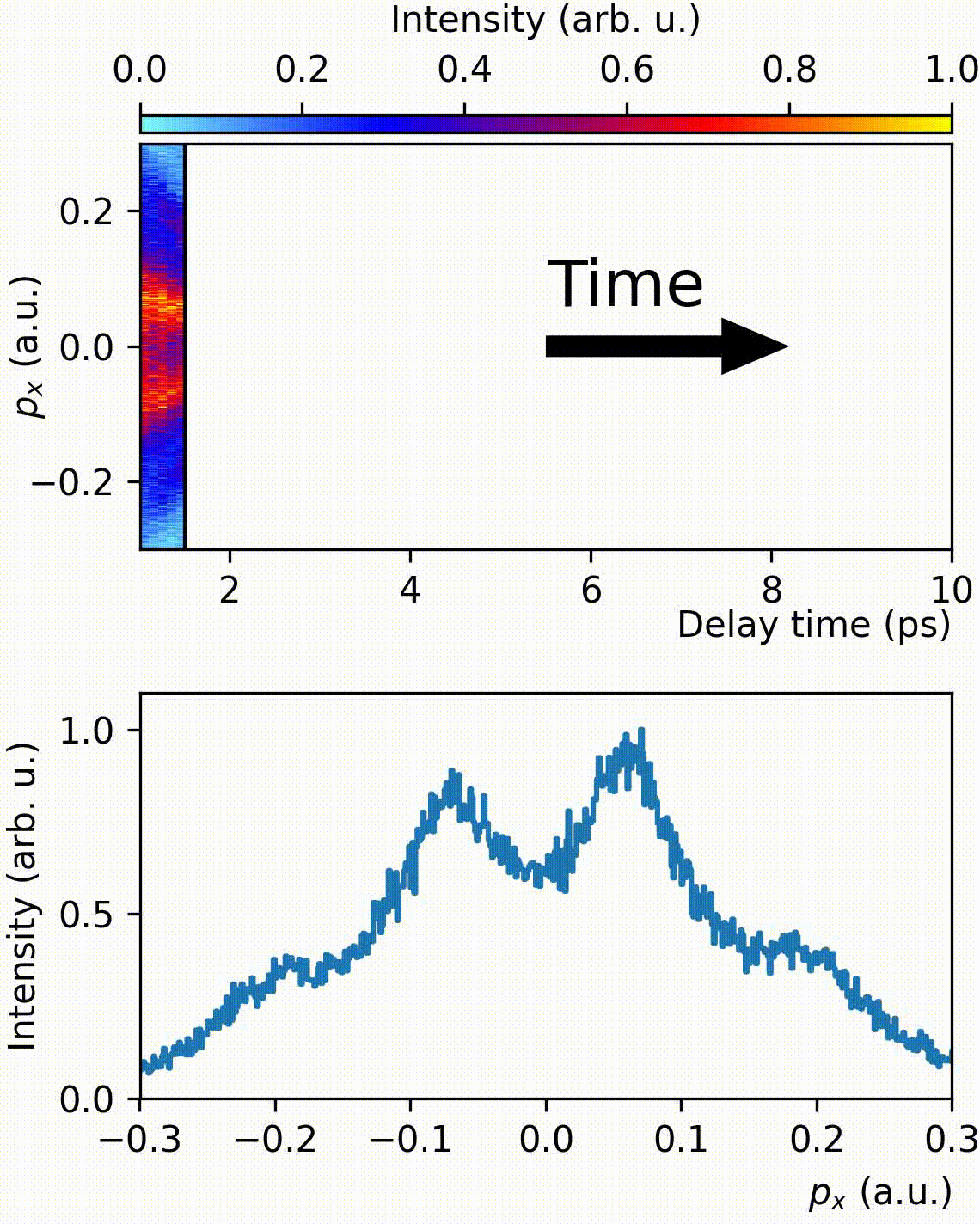Ultrafast Kapitza-Dirac effect
|
Quantum mechanics tells us that electrons released from an atom are not classical particles but they are to be described by a wavepacket, which has an intrinsic phase, which is usually invisible. This (invisible) phase evolves in time and it drives the spreading of the wavepacket. In the reported work we show that the ultrafast version of the well known Kapitza Dirac Effect is a unique tool to visualized the previously invisible time evolution of the quantum phase of a free electron wavepacket. To this end two femtosecond laser pulses are fired from opposite sides at the electron at a fixed time delay after it is set free. Photons from these laser pulses are backscattered at the electron wavepacket creating replicas of the wavepacket shifted in momentum space (Figure 1). Like in the double slit experiment the interference between the shifted and unshifted wavepacket leads to interference fringes which we measure with a COLTRIMS reaction microscope. The interference depends on the intrinsic phase structure of the wavepacket and thus changes with time (see movie).
FIG. 1. Laser pulses are fired from both sides at a free electron wavepacket. Kapitza Dirac stimulated Compton backs scattering of photons shift the wavepacket in momentum to the left or right. The interference between these shifted wavepacket manifest in the interference fringes.
FIG. 2. measured interference fringes in a free electron wavepacket released by strong field ionization from an atom at time t=0. After a delay of some psec two counterpropagating laser pulses (see Fig. 1) are fired at the free electron giving rise to the interference fringes. Publication: |


